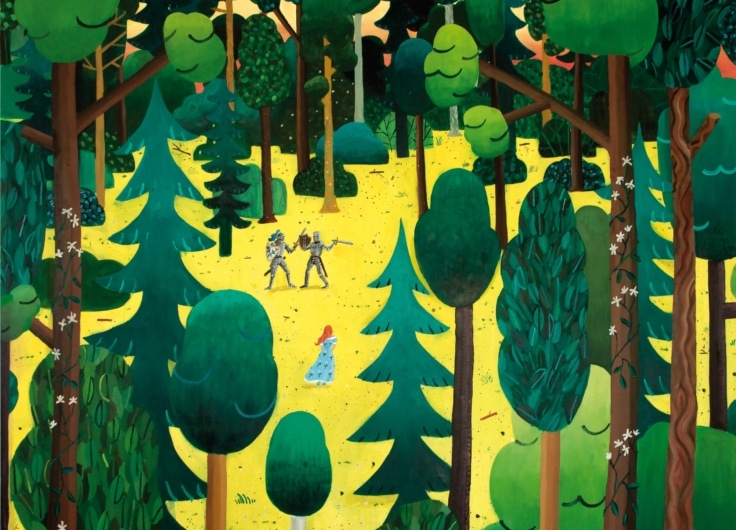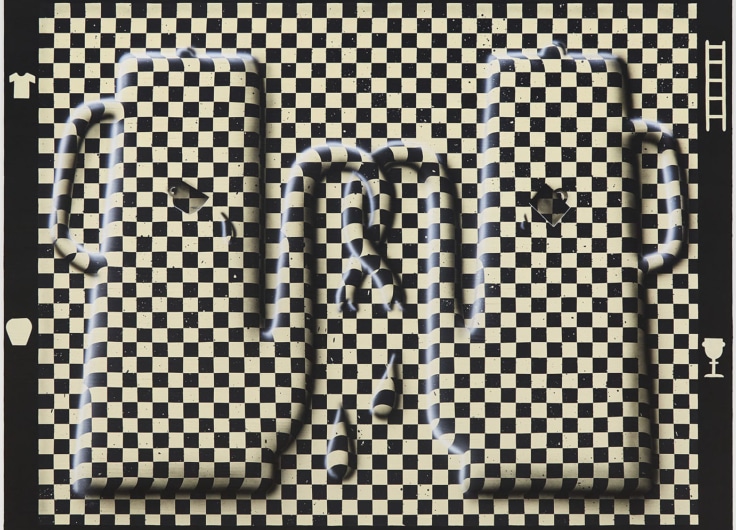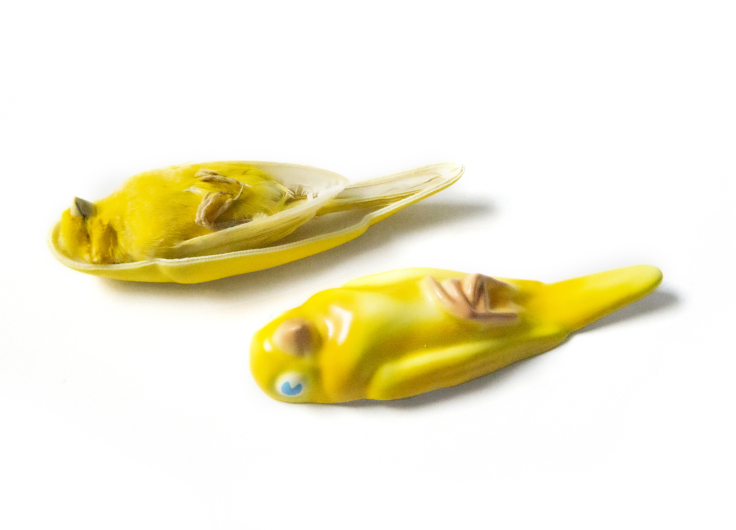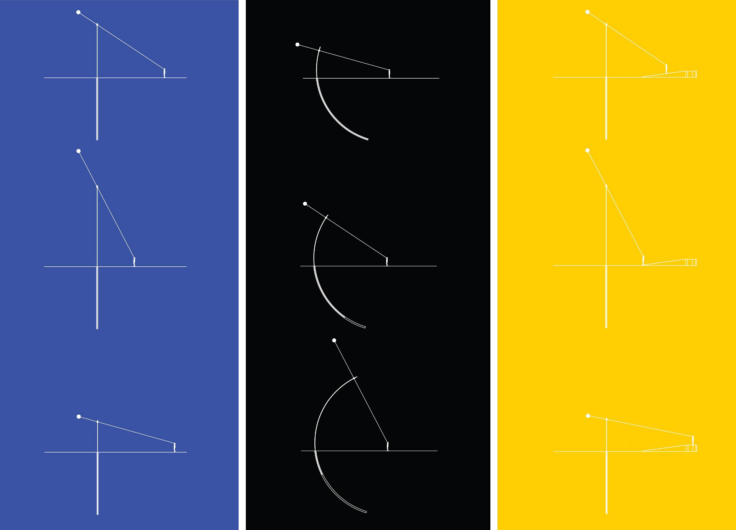Maika Garnica Conjures Soundscapes From Clay
Maika Garnica (b.1992) translates form and material into sound, building objects in clay and playing them to produce atmospheric soundscapes. Some of her objects resemble traditional musical instruments, others are more abstract, playable sculptures that produce sound when blown, scraped or struck. In performance, her installations turn into exotic orchestras.
Garnica was born in Dendermonde into a Belgian-Bolivian family, and studied sculpture at the Royal Academy of Fine Arts in Antwerp. She fell in love with clay while making figure studies, and started to explore its material properties, not simply its ability to create forms. One attraction was that clay could be shaped by hand rather than requiring tools, so that every touch registered on the surface.
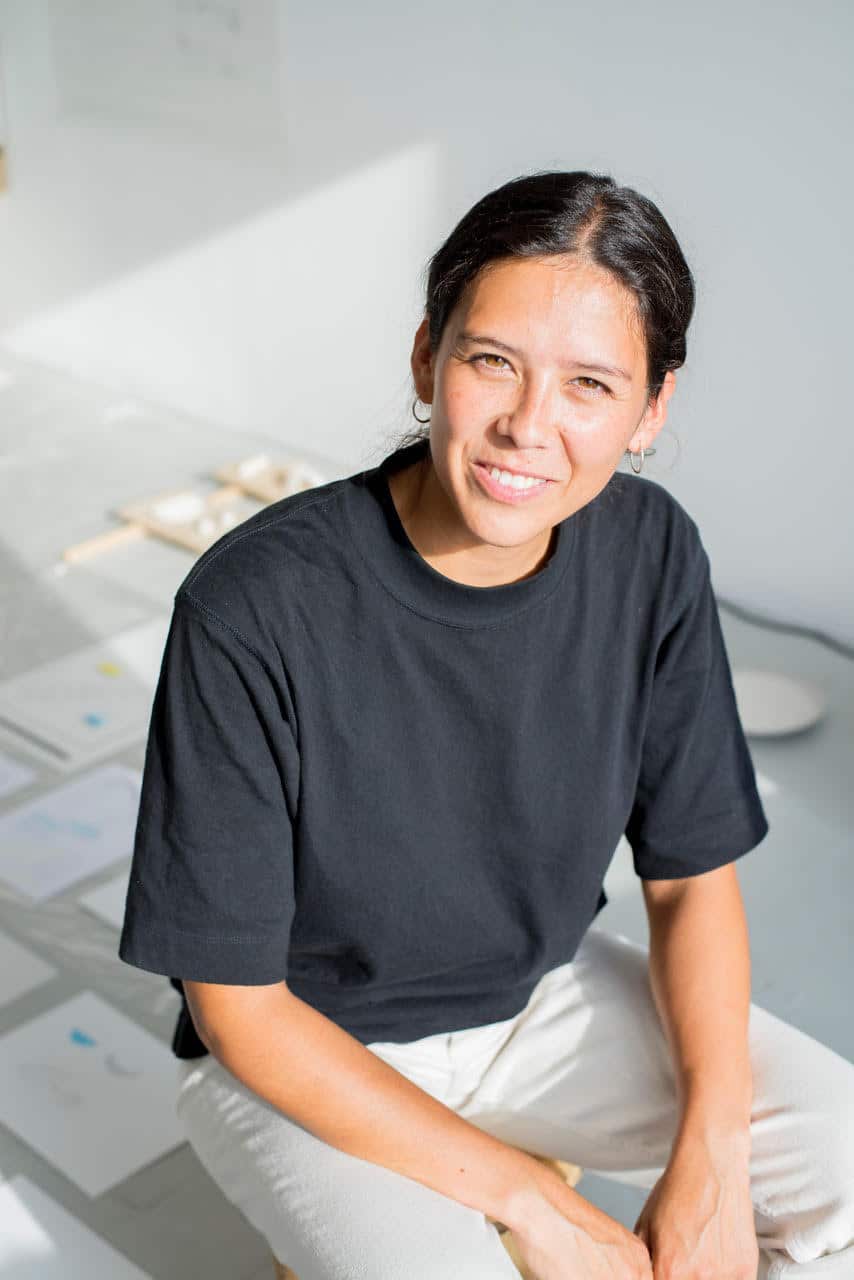 Maika Garnica
Maika Garnica© Vesna Faassen
Her first exploration of sound came during a period studying in Geneva under the Erasmus programme, when she had to find a project for a ceramics workshop. Already an experienced trumpet player, she decided to create ceramics that could be played like instruments, and which would enhance the experience of those playing them, in particular by channelling vibrations. These ‘sound objects’ in fired clay included a horn that curved around so that its mouth pressed against the player’s stomach, directing the sound and vibration back into the body. Another doubled this experience, with interlocking horns for two people to play. Still, another had a bulging clay body that had to be played clutched in an embrace.
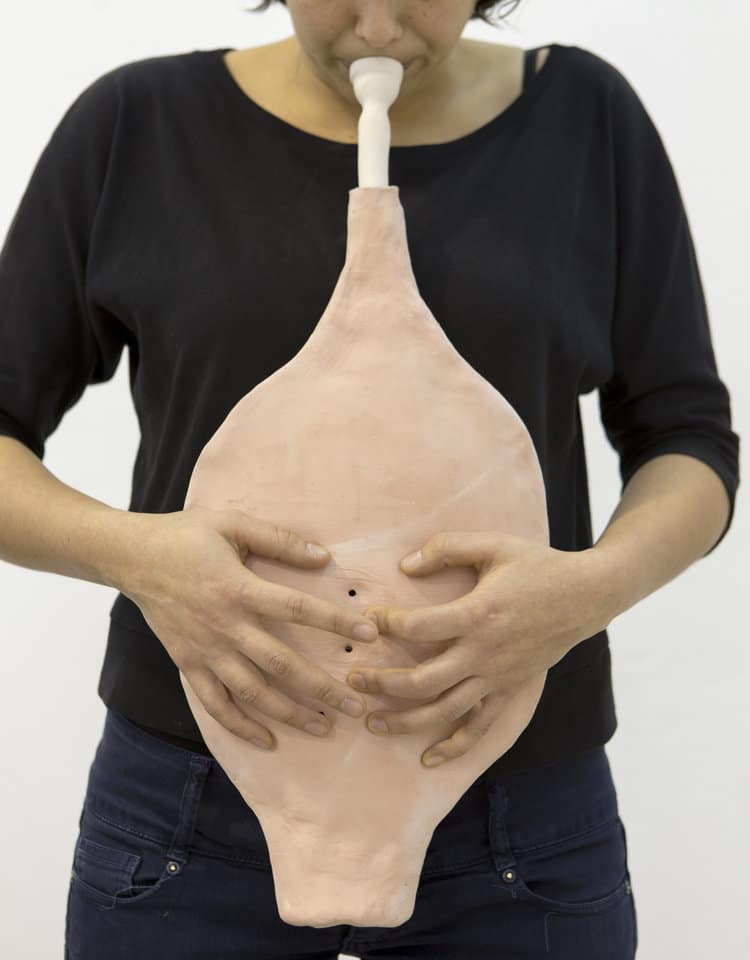 A buiktrompet, one of Maika Garnica’s early Sound Objects
A buiktrompet, one of Maika Garnica’s early Sound Objects© Maika Garnica / photo: Lukas Verdijk and Maika Garnica
This experiment was a success, up to a point, but turned out to have limitations. In particular, people were reluctant to play with the objects, fearing their fragility. So the ceramics that Garnica made next focused on sound and vibration in a more conventional way. She researched instruments from different periods and cultures, paying particular attention to how the forms related to the sounds they made, and the effects produced by small variations in form.
Garnica says that she knows roughly what sound an object will produce, but it is only once she has it in her hands that she finds out its precise characteristics. So each firing of instruments is followed by a learning process as she explores their sounds. The result is a small orchestra of instruments that have become recurring elements in her work. According to the project, this involves aspects of sculpture, sound, video, installation and performance.
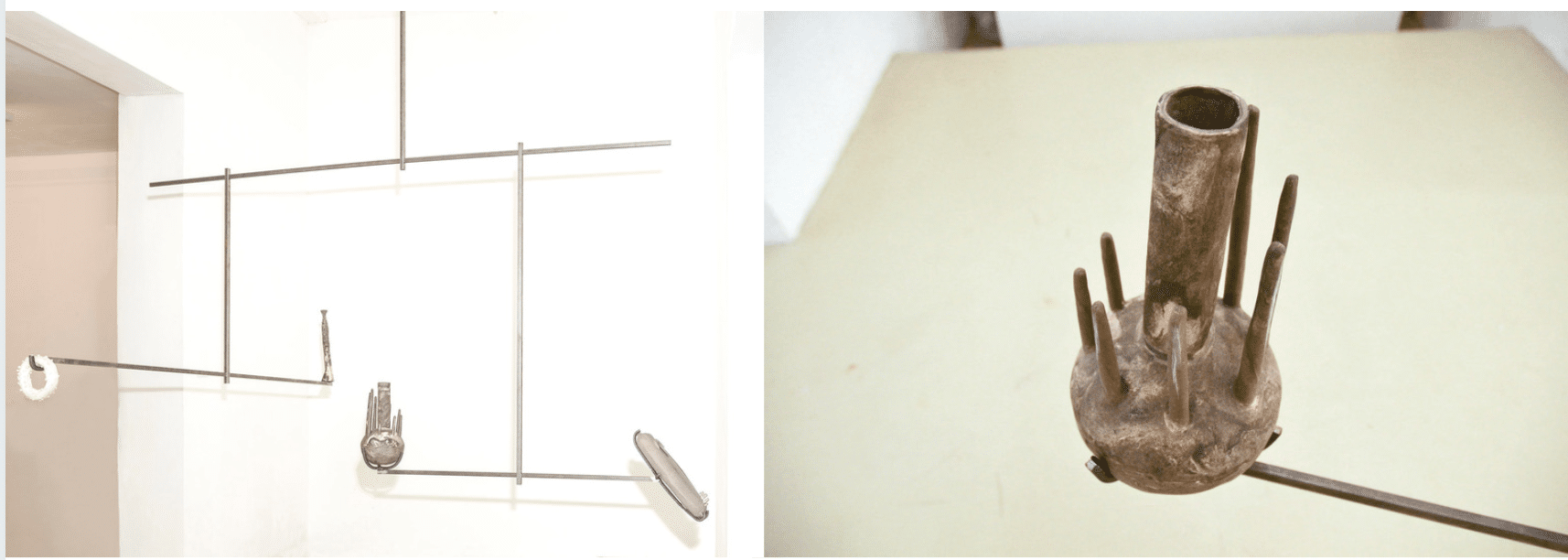 Balancing Vibrations (2017), installation and detail
Balancing Vibrations (2017), installation and detail© Maika Garnica / Holga Licht and Maika Garnica
In some pieces, the emphasis is on the physical presence of the instruments. In the installation Balancing Vibrations (2017), for example, four instruments are suspended on the arms of a steel framework, suggesting a mobile. This draws attention to the shapes of the instruments, their contrasting volumes, and their surfaces. In Five Forms Five Sounds (2016) the instruments are placed on stands behind paper screens, accompanied by recordings of their respective sounds.
The ceramic instruments are fired but not glazed, the variations in their colour down to the mixture of clays used, or the firing temperature. This distinctive appearance has the effect of distancing them from the instruments that inspired them. The familiar textures and colours of brass and wood are not there to tell us how they might sound or where they might come from. They belong to their own family rather than different traditions or diverse cultures.
In other pieces, the focus is on the sounds that individual instruments produce. Rotate Orbit Whirl (2017) features a video of Garnica playing the instruments in the open air, exploring their sounds and their interactions with the environment. Garnica’s breath in the instruments is accompanied by the wind moving in the trees, her touch on the clay by the scrape of stiff grass against the surface of the instrument.
More recent installations combine sculpture, sound and performance in a more layered way. In From Bow to Ear (2020), for example, a selection of instruments is displayed on a small table supported by five slender metal arches. Visitors can approach and look, but there is no physical barrier or protective museum case. It is as if Garnica has reacted to the public’s reluctance to play her earlier instruments by heightening the feeling of their fragility and vulnerability. At certain moments, Garnica steps into the charmed circle of the installation and plays the instruments, using a digital sampler to record, loop and layer the sounds produced into a rich soundscape. For the rest of the time, the installation is accompanied by a recording of one such performance, creating an eerie absence where the performer should be.
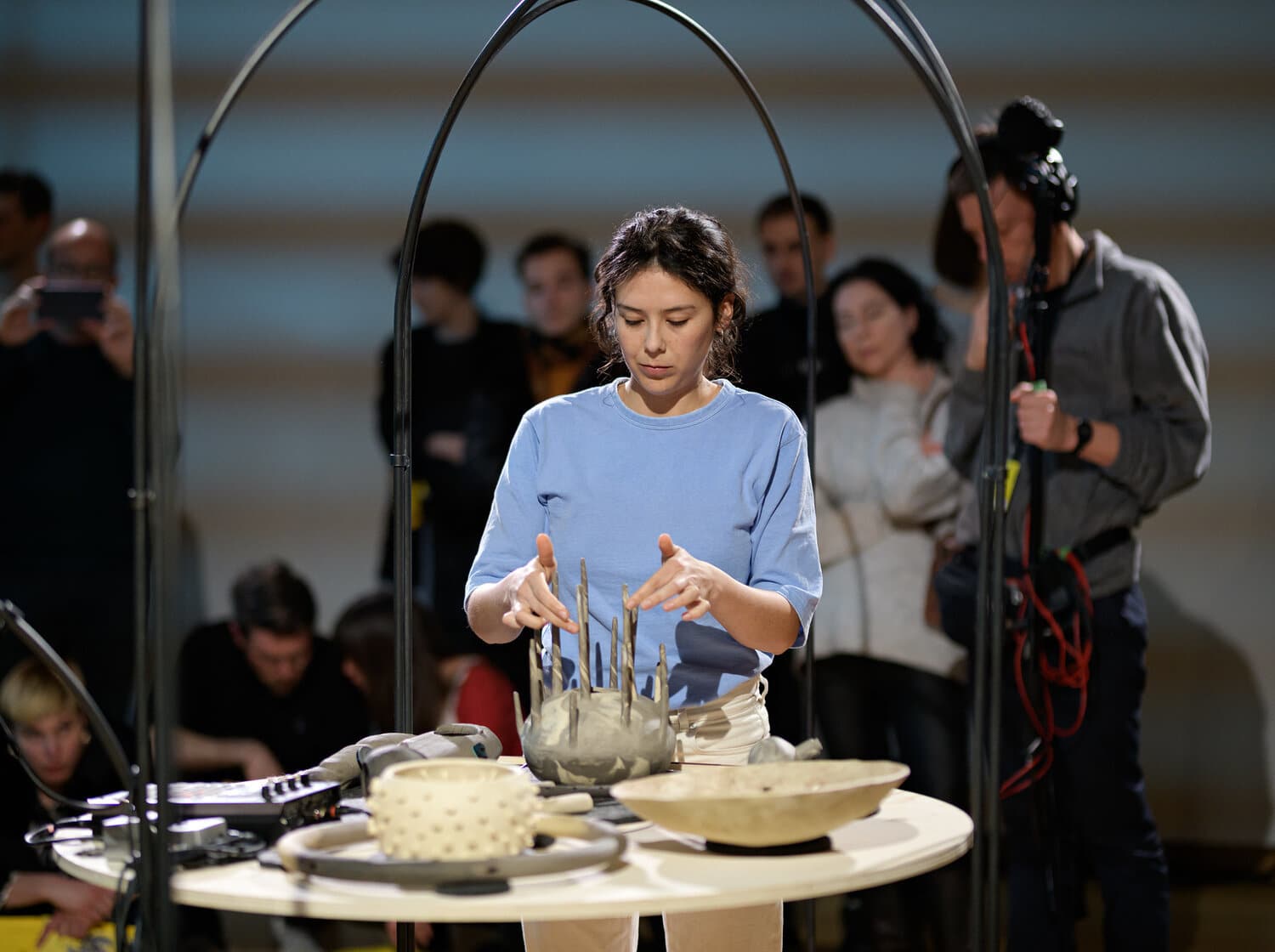 Maika Garnica performing From Bow to Ear, 21 February 2020, Stedelijk Museum Amsterdam.
Maika Garnica performing From Bow to Ear, 21 February 2020, Stedelijk Museum Amsterdam.© Maika Garnica / Photo: Pieter Kers
The sound palette that these clay instruments produce is remarkably broad, but often subversive, differing from the way we might expect the forms to sound. Blown instruments take on a softer, earthier sound than the originals in metal or wood, while percussive forms become sharper, with clay hitting clay. One striking case is a sound object based on a rain stick, a South American instrument traditionally made from a dried cactus. The spines are broken off and reversed, pushed through into the hollow centre. Then beans or pebbles are placed inside, knocking against the spines when the tube is moved, making a sound like rain. Re-imagined in clay, the instrument produces a sharp, crystalline sound that is hard to associate with any natural phenomenon.
Another series of instruments look like bowls with spikes of different lengths emerging from their surfaces; these spikes emit a high vibration when played with a violin bow. Then there are instruments which are simply dishes, on which clay powder and pellets are dropped, or which ring when struck.
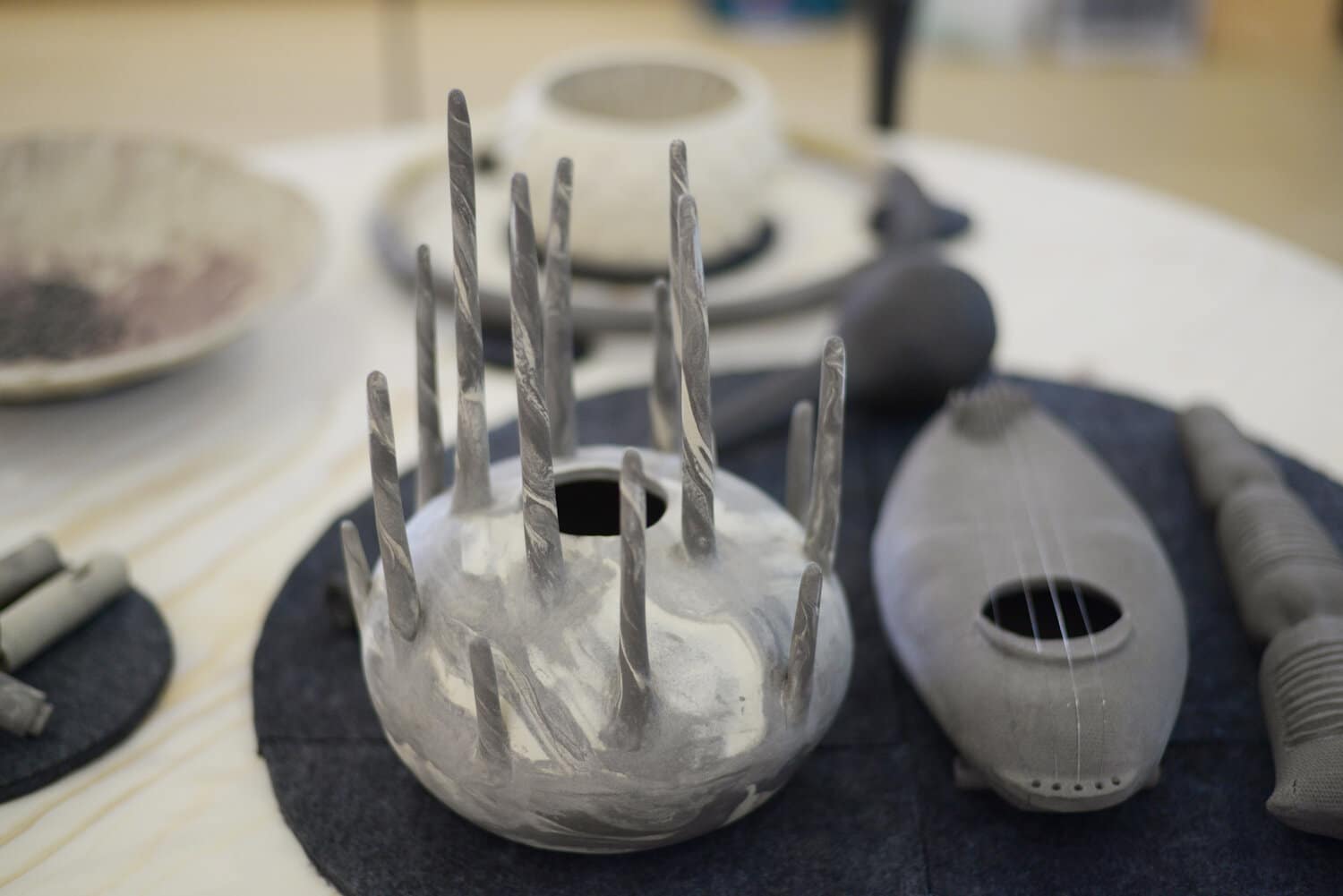 From Bow to Ear (2020)
From Bow to Ear (2020)© Maika Garnica
From Bow to Ear premiered at the Stedelijk Museum in Amsterdam, as part of the Sonic Acts Academy, where the setting was a rather neutral gallery space, and it has been interesting to see how a change of venue affects the work’s impact. Earlier this year it was exhibited in Sint-Jans Hospital in Bruges, where it became apparent how much the arched supports mirrored the medieval architecture, and how strongly the arrangement resembled a Dutch Golden Age still life. The installation is now part of the Antwerp city collection, housed at the M HKA museum of contemporary art.
Garnica also uses her instruments in live performances with other artists, with a result that is more rhythmic and closer to music than the more abstract soundscapes she produces alone. For a number of years, she worked with Chakky Kato and Senne Claes in the group Sui Moon, whose performances also produced related artworks. She has also collaborated with filmmakers, most recently Ans Mertens for the project Interlude (2021), where the sound of the instruments is paired with images of the shadows they cast.
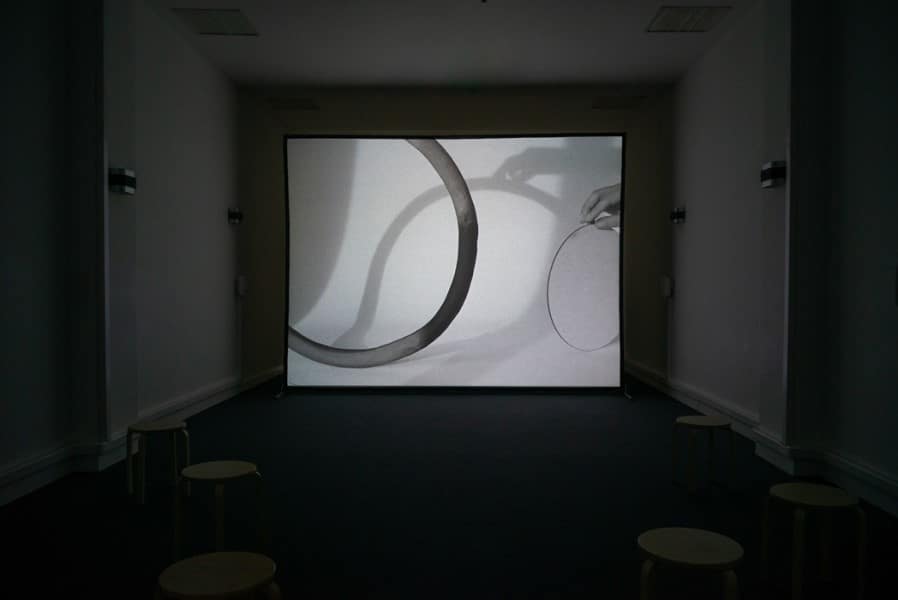 Interlude (2020), from a showing at M HKA, Antwerp
Interlude (2020), from a showing at M HKA, Antwerp© Maika Garnica / Photo: Ans Mertens
This month Garnica will present two new works. For the Magma Triennale in Louvain-la-Neuve, from 16 September to 28 November, she is making a sound-only piece based on recordings produced by playing a selection of items from the university museum’s collection, in much the same way as she plays her own creations.
Then she will unveil her first outdoor work, commissioned for the Middelheim Museum near Antwerp. This will be a large, hollow bronze ring, filled with beads that will make a sound when moved. However, the piece is so heavy that it will take ten people to ‘play’ ‘instrument’. They will carry it through the sculpture park on 18 September, after which it will remain in one place. The plan is to record the sound it makes on its journey, making it available through a QR code placed beside the piece.
While marking a temporary step away from her clay instruments, both pieces take forward ideas from her work dealing with form, material and sound. And in the Middelheim piece, she may have found a dramatic solution to the problem of how to share sound and vibration between a group of people, taking fragility out of the equation entirely.
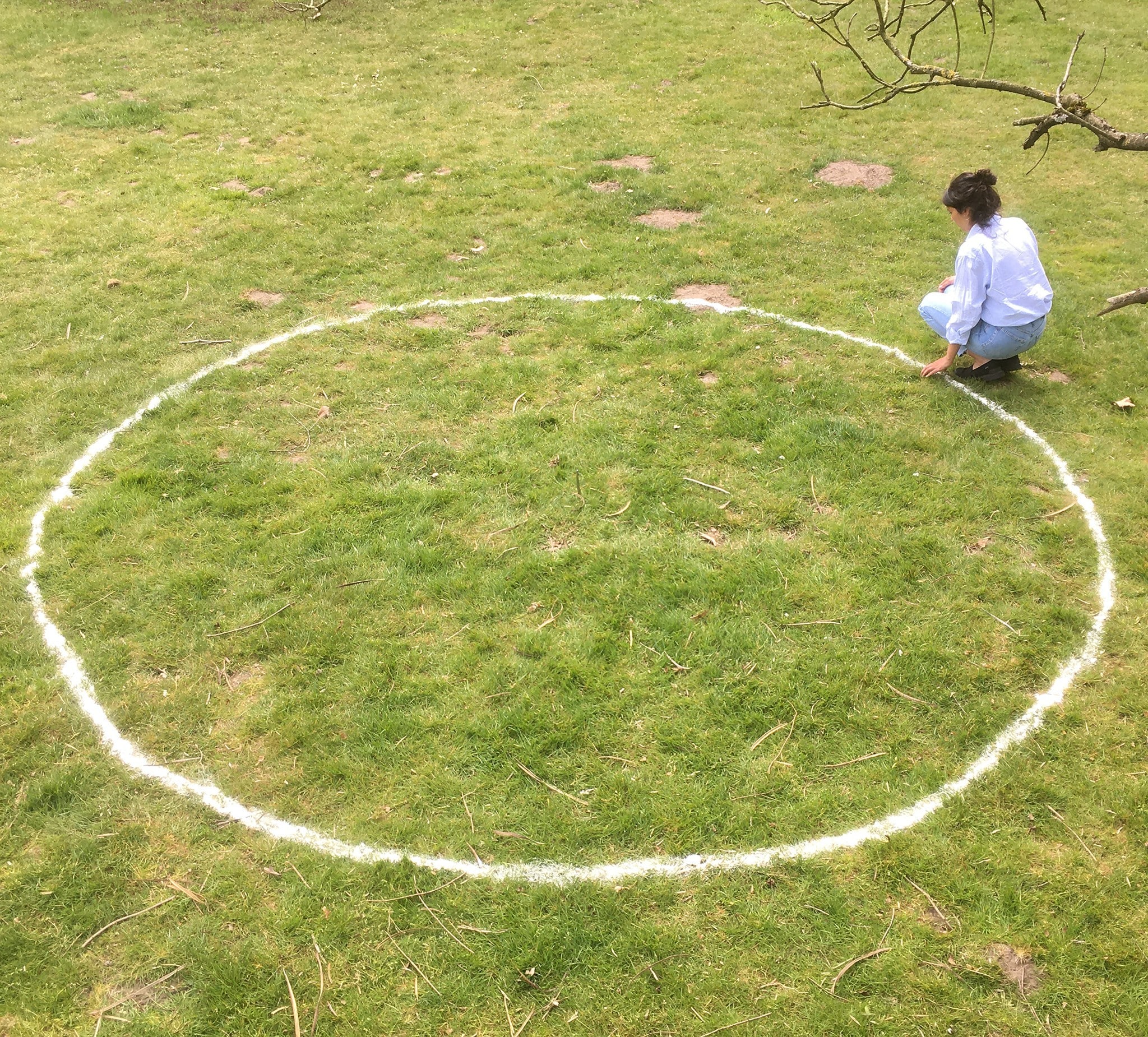 Maika Garnica preparing for her new work at the Middelheim Museum.
Maika Garnica preparing for her new work at the Middelheim Museum.© Maika Garnica / photo: Ian Coomans


